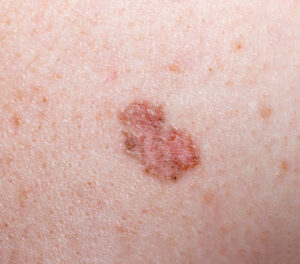
What is Basal cell carcinoma?
It is a common, non-melanocytic type of skin cancer, that develops on the parts which are under excess sun exposure. Basal cell carcinoma usually grows slowly and often shows up after many years.
Who is at higher risk of Basal Cell Carcinoma?
Men are at higher risk than women. Patients of fairer skin tones or 50 to 80 years of age are affected more often.
How is basal cell carcinoma Classified into different types?
Basal-cell carcinomas are divided into the following types:
• Nodular basal-cell carcinoma
• Cystic basal-cell carcinoma
• Cicatricial basal-cell carcinoma
• Infiltrative basal-cell carcinoma
• Micronodular basal-cell carcinoma
• Superficial basal cell carcinoma
• Pigmented basal-cell carcinoma
• Rodent ulcer
• Fibroepithelioma of Pinkus
• Polypoid basal-cell carcinoma
• Pore-like basal-cell carcinoma
• Aberrant basal-cell carcinoma
How Skin Appears in Basal-cell carcinoma?
• Pearl-like shining nodule on the skin.
• Patch is like eczema.
• Erosion or ulceration of the patch is in the centre.
• Rolled border
• Translucency
• Telangiectases
What complications can be caused by untreated Basal-cell carcinoma?
• Risk of recurrence
• Aggressive Cancer
• Risk of other types of skin cancer
Which Diseases have the Same Symptoms as Compared to Basal cell carcinoma?
• Sebaceous hyperplasia
• Squamous cell carcinoma
• Molluscum contagiosum
• Psoriasis
• Melanocyte nevi
• Bowen disease
• Angiofibroma
• Actinic keratosis
• Fibrous papule of the face
• Malignant melanoma
What is the Homeopathic Treatment of Basal cell carcinoma?
- ARSENIC ALB
- ARGENTUM NITRICUM
- CANNABIS SATIVA
- CONIUM MACULATUM
- RADIUM BROMIDE
